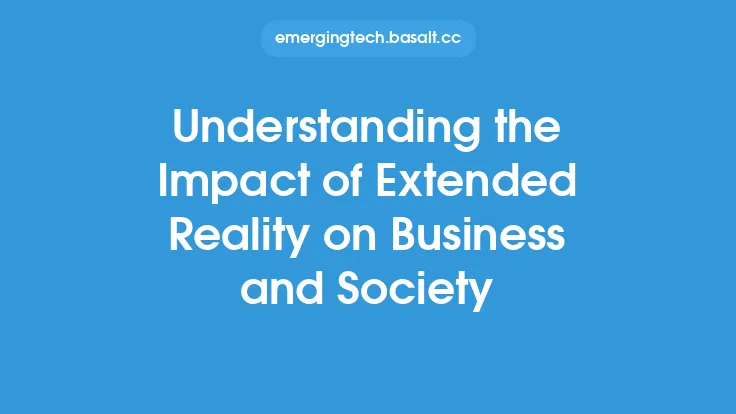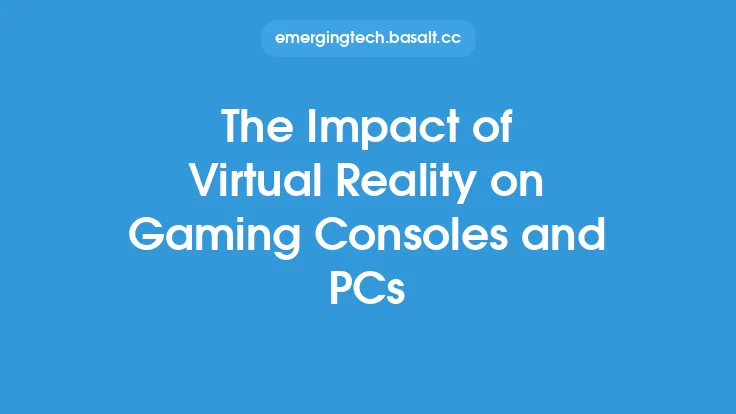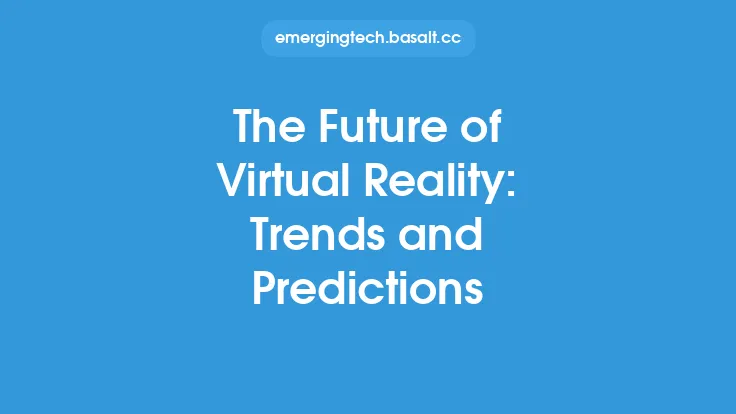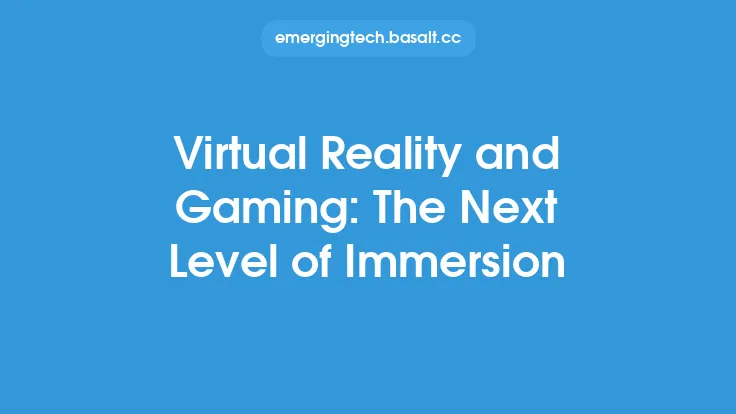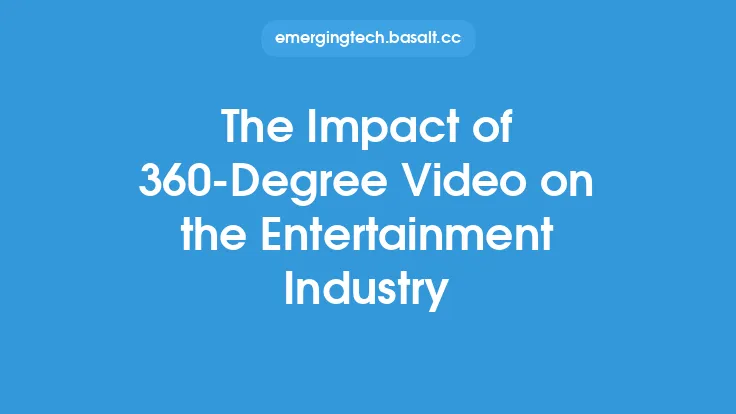The concept of virtual reality (VR) has been around for decades, but it's only in recent years that the technology has advanced to the point where it's having a significant impact on society. From entertainment and education to healthcare and beyond, VR is changing the way we live, work, and interact with each other. In this article, we'll take a closer look at the impact of virtual reality on society, exploring both the benefits and the challenges that come with this emerging technology.
Introduction to Virtual Reality
Virtual reality is a computer-generated simulation of a three-dimensional environment that can be experienced and interacted with in a seemingly real or physical way. This is achieved through the use of a headset or other device that displays the virtual environment, along with sensors and controllers that track the user's movements and allow them to interact with the virtual world. VR can be used to create a wide range of experiences, from simple games and simulations to complex, interactive stories and environments.
The Impact of Virtual Reality on Entertainment
One of the most significant areas where virtual reality is having an impact is in the entertainment industry. VR is being used to create immersive, interactive experiences that allow users to step into the world of their favorite movies, TV shows, and video games. This is changing the way we consume entertainment, allowing us to become active participants rather than passive viewers. For example, VR experiences like "Star Wars: Secrets of the Empire" and "The Walking Dead: Onslaught" are allowing fans to become a part of their favorite franchises in a way that was previously impossible.
The Impact of Virtual Reality on Education and Training
Virtual reality is also having a significant impact on education and training. By providing a safe, controlled environment, VR allows students to learn by doing, rather than just reading or listening. This can be especially effective for subjects like science, technology, engineering, and math (STEM), where hands-on experience is essential. For example, VR can be used to simulate complex surgical procedures, allowing medical students to practice and learn without putting real patients at risk. Similarly, VR can be used to train workers in industries like manufacturing and construction, where safety is a top concern.
The Impact of Virtual Reality on Social Interactions
Virtual reality is also changing the way we interact with each other. Social VR platforms like VRChat and Facebook Spaces are allowing users to connect with each other in virtual environments, creating new opportunities for socialization and community-building. This can be especially beneficial for people who are isolated or have difficulty interacting with others in person, such as those with disabilities or mental health conditions. However, there are also concerns about the potential negative impacts of social VR, such as social isolation and decreased face-to-face interaction.
The Technical Aspects of Virtual Reality
From a technical standpoint, virtual reality is a complex and multifaceted technology. It requires a combination of advanced hardware and software, including high-resolution displays, sensors, and controllers. The most common type of VR headset is the head-mounted display (HMD), which uses a combination of lenses, displays, and sensors to track the user's head movements and display a stereoscopic image. Other types of VR devices include standalone headsets, PC-based headsets, and mobile-based headsets. The software used to create VR experiences is also highly advanced, using techniques like 3D modeling, physics engines, and artificial intelligence to create realistic and interactive environments.
The Challenges and Limitations of Virtual Reality
Despite the many benefits and opportunities presented by virtual reality, there are also several challenges and limitations to consider. One of the biggest challenges is the cost and accessibility of VR technology, which can be prohibitively expensive for many individuals and organizations. There are also concerns about the potential health and safety risks of VR, such as eye strain, headaches, and motion sickness. Additionally, there are technical limitations to consider, such as the need for high-end hardware and the potential for lag, glitches, and other performance issues.
The Future of Virtual Reality
As virtual reality technology continues to advance and improve, we can expect to see even more innovative and impactful applications in the future. One area that holds great promise is the use of VR for therapy and treatment, such as exposure therapy for anxiety disorders and PTSD. Another area is the use of VR for environmental and social impact, such as raising awareness about climate change and promoting empathy and understanding. As VR becomes more widespread and accessible, we can expect to see new and innovative uses emerge, changing the way we live, work, and interact with each other in profound and lasting ways.
Conclusion
In conclusion, the impact of virtual reality on society is a complex and multifaceted topic, with both benefits and challenges to consider. From entertainment and education to social interactions and technical aspects, VR is changing the way we live, work, and interact with each other. As the technology continues to advance and improve, we can expect to see even more innovative and impactful applications in the future. Whether you're a gamer, a student, or simply someone who's curious about the latest technology, virtual reality is definitely worth exploring and experiencing for yourself.
